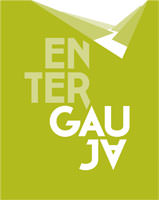Sigulda thrills with the nature enclosed city environment, inviting to study three medieval castles, to hike in Gauja National Park, and to take part in culture and sports events.
Sigulda is where the nature lives in the town, and is an integral part of it. The forest-covered valley of the River Gauja hides away many exciting, myth-enshrouded culture, history, and nature legends, as well as unique active leisure adventures.
Active leisure adventures
The only bob, luge and skeleton track in the Baltic States allows enjoying the speed by rushing down in a tailor-made sledge either in winter or summer. Meanwhile swimming in the air while resting on an air current may be enjoyed in the vertical wind tunnel “AERODIUM”, which has become world-famous through participation in various global events.
The steep slopes of the River Gauja banks are now home to tree top rope adventure tracks “Mežakaķis” and “Tarzāns” allowing to enjoy not only physical activities, but also great views.
The cable car linking both banks of the River Gauja is not only an excellent viewing platform offering views over the historic castles and the valley, but also a real adrenaline bomb with its bungee jumping offers in the evenings.
During winter, the slopes of Sigulda are a place for downhill skiing or snowboarding, and the unique, frozen track made by Sigulda Sports and Active Leisure Centre (“Siguldas Sporta un aktīvās atpūtas centrs”) offers also cross-country skiing. Each winter Sigulda is the host town of the World Luge Championship, and downhill and cross-country skiing competitions of national or Baltic States’ level.
During the warm season the curvy trails leading through Sigulda and along the River Gauja invite to hike, cycle, or take canoeing trips revealing ever new postcards of nature behind the next curve. Sigulda is a regular host of cycling competitions, including the most important event — Unity Ride, gathering more than 6000 visitors.
Impressive nature objects and sceneries
Valley of the River Gauja in Sigulda accommodates the eldest tourism object in the Baltic States — Gutman's Cave, which is the largest grotto cave in the Baltics with historic inscriptions on its walls dating back to the 17th century. Gutman's Cave is related to a love legend about the Rose of Turaida — a girl named Maija, who secretly met her lover Viktors here.
Trails in Sigulda lead to other significant nature objects as well. Kraukļu Ravine and Kraukļu Cave, Pēter's Cave and the most impressive cliff wall of the primeval valley of the River Gauja — the Velnala cliffs and cave, which is best seen from the pedestrian bridge over the River Gauja.
Breathtaking landscapes over the primeval valley of the River Gauja, which is up to 85 m deep, are seen both from the Gleznotāju or Paradīzes (Painter’s or Paradise) hillocks, which was once the place where the Latvian masters of painting like Jūlijs Feders, Jānis Rozentāls, and Vilhelms Purvītis have painted, and from the Ķeizarskats and Ķeizarkrēsls that nowadays are a reminder of the visit by the Russian Tsar Alexander II in Sigulda.
Allaži is a settlement in Sigulda Municipality, where there is a unique geologic object — one of the rare karst sinkhole systems in Latvia, and during its active period the Lake Linezers disappears for some time leaving only an S-shaped bed of the lake. Meanwhile a very steep slope is seen in Mežmuiža, from which 7-17 springs are flowing out and are merging to become the small Lake Dzirnavu, the bed of which is covered by the Devonian blue gley.
Authentic castles
The mighty witnesses of the past — three castles standing at a shooting distance of a cannon from each other — Sigulda Castle, Turaida Castle and Krimulda Castle — are the first objects to be seen by travellers who have approached the primeval valley of the River Gauja. Events related to these castles date back to the 13th century when each bank of the River Gauja remained in the possession of different rulers — Riga Bishop and Order of Sword Brothers.
The Sword Brothers, who controlled the left bank of the River Gauja from 1204 to 1209, built the Sigulda Castle. Initially it was a castellum-type fortification with a chapel. Later the castle was transformed into a convent-type building, which now reveals the everyday life of the brothers of the Livonian Order.
Turaida Museum Reserve was erected in 1214 on the right bank of the River Gauja. It was one of the residences of the Archbishop of Riga. After a fire in 1776 the castle was not restored, but the romantic castle ruins caught the interest of travellers. Castle restoration was commenced in 1953 with the reconstruction of the castle tower.
Meanwhile archaeological excavations, lasting for more than 25 years, were started in 1973, followed by restoration and reconstruction works, which can be observed when visiting one of the most popular museums in Latvia — Turaida Museum Reserve.
Looking over the primeval valley of the River Gauja to the right bank you shall spot another building — Krimulda Manor, built by the princes and princesses of the Von Lieven Family in 1848. The manor is located on the edge of the primeval valley, and its terrace offers a magnificent view towards Sigulda.
Sigulda New Castle is situated next to Sigulda Medieval Castle. It was erected by Duke Kropotkin in 1878 and it was rebuilt in 1936, still retaining the unique interior of national romanticism.
Large-scale culture events
Each summer, the International Sigulda Opera Festival allow enjoying the performance of many excellent artists reviving powerful emotions.



